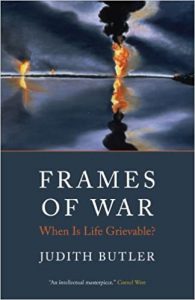The day before Audrey Siegl’s CEL talk on Water, Identity, and the city, I was in my ASTU class listening to Dr. Moberly Luger give an introduction to the talk and encouraging students to go. After her introduction, I asked if Dr. Luger knew if Siegl would have slides to share after her talk since the previous CEL talks all utilized PowerPoints as a visual aspect of their talks. Dr. Luger responded by saying that it seemed like Audrey Siegl did not have any slides at all which surprised me. Turns out, Siegl didn’t need them and in fact, her talk was more powerful without slides because it made the audience focus on her and the raw emotion she exhibited while speaking.

Photo of Audrey Siegl (https://www.huffpost.com/archive/ca/entry/audrey-siegl-vancouver-cope-council-candidate-answers-iconic-q_b_6134626)
Siegl’s talk felt more like a story that we were all listening to, and she had our full attention. The room was much quieter than previous talks, so quiet that you could hear a pen drop (or a dog bark which did happen). Her words had power and were woven together in a way that now looking back on her story, made aspects of her life in relation to water all connect to each other. Her stories really highlighted the interconnectedness of humans and the effect we have with land, water, and other people which reminded me of the idea of shared vulnerability. This idea first came up in Judith Butler’s book Frames of War in my readings for ASTU and it’s the idea that we are all vulnerable, that we need each other to not hurt the things that let us live and to not hurt each other. Shared vulnerability in Siegl’s story shows up as how she and her loved ones have already been hurt by others.

Photo of the book Frames of War: when is Life Grievable? By Judith Butler (https://www.amazon.ca/Frames-War-When-Life-Grievable/dp/1844676269)
She spoke about personal stories like how her mother loves eating duck but can’t anymore because of pollution from the Kinder Morgan Holding Tank. This one-story ties in with so many connections that could be discussed such as effects of humans on animals or relation of economics and value of nature. Some of these ideas do seem political but as Siegl says, “[her] work is not political, it’s about survival” which was a very powerful line. She makes an excellent point because what she’s really saying here and throughout her talk is that we need places of nature to survive. We need clean water. We need animals that don’t have a high level of mercury or microplastics in them. Above all, she wants everyone to understand that we are all connected: with the land, water, and each other which is why we need them all to be healthy and well cared for in order for our shared survival.

One response to “Audrey Siegl’s CEL talk on Water, Identity, and the City with ideas of interconnectivity”